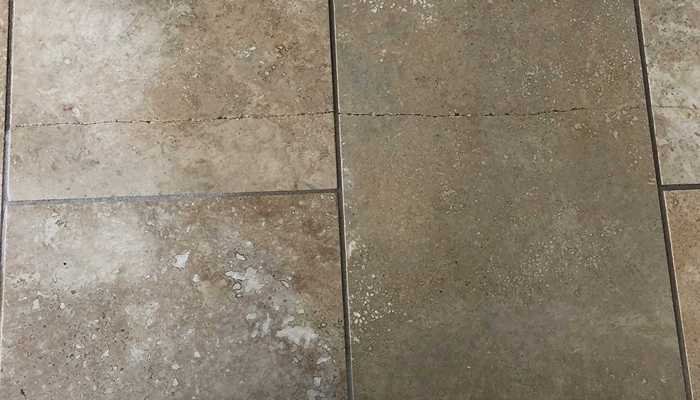
Modern Travertine Floor Care for Surrey Homes: What Works in 2025 and Beyond
Last Updated on September 25, 2025 by David
🧼 Key Takeaways
-
- Travertine remains a popular flooring choice in Surrey homes due to its timeless aesthetic and natural elegance.
- Modern cleaning and maintenance techniques have evolved significantly by 2025, offering better protection and longer-lasting results.
- Homeowners are increasingly prioritising eco-friendly solutions, opting for non-toxic products and sustainable care methods.
- Professional restoration services are recommended for deep cleaning, stain removal, and surface protection to preserve the stone’s integrity.
- DIY care is still viable, but requires careful product selection and regular upkeep to avoid damage or dulling.
Surrey Travertine Restoration: Future-Proof Methods for Long-Term Results
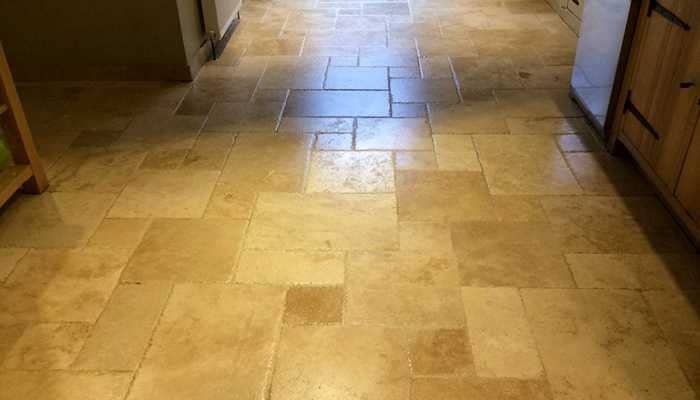
Travertine flooring continues to be a hallmark of refined design in Surrey homes. Its warm tones, natural veining, and tactile surface make it a standout choice for kitchens, hallways, and bathrooms alike. But as we move into 2025 and beyond, the way we care for travertine is evolving—driven by more innovative products, better techniques, and a deeper understanding of how this stone behaves in UK environments.
Pro Tip: We recommend these products for daily Travertine maintenance cleaning.

Fila Pro Floor Cleaner
|

LTP Floorshine
|

Vileda H2PrO Spin Mop System
|
If your travertine floors are looking dull, stained, or uneven, it’s not just wear and tear—it’s a sign that traditional cleaning methods may no longer be enough. This guide explores the most effective modern strategies for restoring and protecting travertine in Surrey homes. From avoiding common DIY pitfalls to leveraging advanced sealing technologies and tailored maintenance routines, we’ll show you what works now—and what will continue to work in the years ahead.
Whether you’re a homeowner in Guildford, a property manager in Epsom, or simply looking to future-proof your stone surfaces, this article is designed to help you make informed, confident decisions. Travertine is an investment—and with the proper care, it can remain a centrepiece of your home for decades to come.
Why Travertine Requires Specialist Care
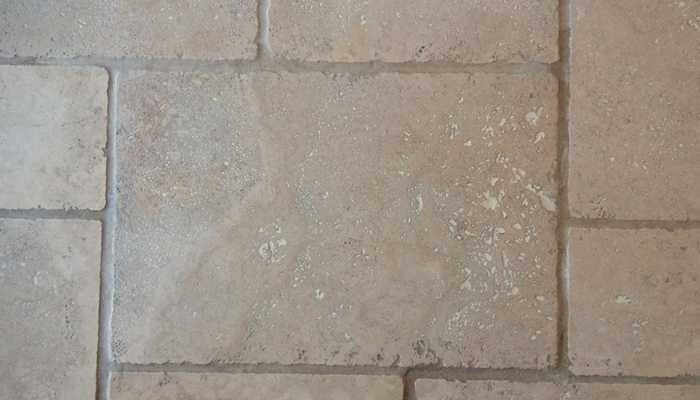
Travertine may be admired for its timeless elegance, but beneath its warm tones lies a stone that demands respect. As a form of limestone, travertine is naturally porous and chemically reactive—qualities that make it both beautiful and susceptible to damage. Unlike ceramic or porcelain tiles, which are non-absorbent and relatively low-maintenance, travertine acts more like a sponge. It absorbs liquids, reacts to acidic substances, and shows wear far more quickly if not properly maintained.
This sensitivity makes it prone to a range of issues:
- Staining from everyday spills like wine, coffee, cooking oil, and rust
- Etching caused by acidic cleaners or citrus-based products
- Discolouration from embedded grime and moisture
- Surface wear in high-traffic zones such as hallways and kitchens
- Mould and mildew in damp environments like bathrooms or conservatories
Many homeowners assume that regular mopping will keep their floors clean. In reality, it often does the opposite—pushing dirt deeper into the stone’s pores and grout lines. Over time, this leads to uneven colouring, dull patches, and a floor that never quite looks clean, no matter how often it’s scrubbed.
Pro Tip: Avoid using vinegar, lemon juice, or bleach on travertine. These acidic substances can chemically etch the surface, leaving permanent dull spots that require professional honing to remove.
Professional care goes beyond surface cleaning. It involves deep extraction of embedded soil, targeted stain removal, and the application of a high-quality impregnating sealer that protects the stone from future damage. This process not only restores the floor’s natural beauty but also extends its lifespan—saving homeowners from costly repairs or premature replacement.
Pro Tip: To test whether your travertine needs resealing, place a few drops of water on the surface. If the water absorbs within a minute rather than beading up, it’s time to reseal.
The Hidden Risks of DIY Travertine Cleaning
Travertine may appear robust, but it’s actually quite sensitive. Many homeowners in Surrey attempt to clean and seal their floors using off-the-shelf products and generic advice, unaware that they may be causing long-term damage. Here’s why a DIY approach often backfires—and what to do instead.
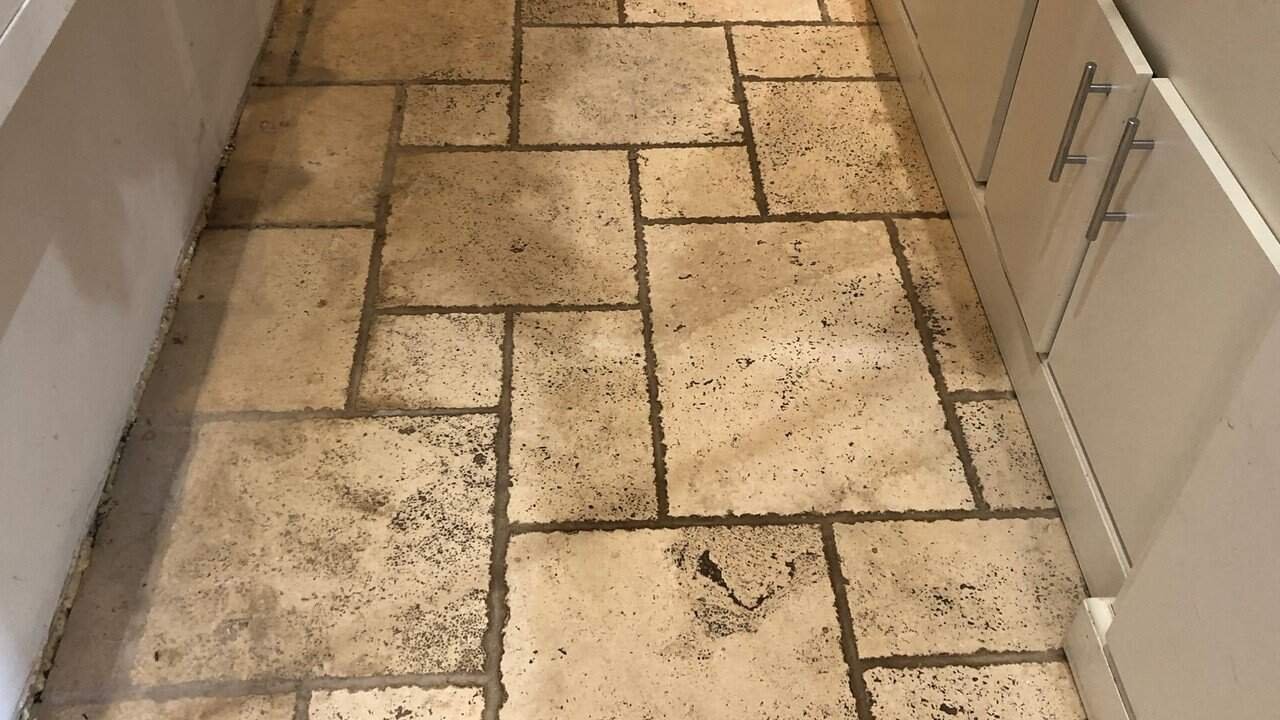
1. Acidic Cleaners Cause Etching
Most household cleaners contain acidic ingredients like vinegar, lemon juice, or bleach. While these may work wonders on ceramic or vinyl, they’re disastrous for travertine. The acid reacts with the calcium carbonate in the stone, causing a chemical burn known as etching. These dull, cloudy marks resemble water stains but are permanent surface damage.
Once etched, the stone loses its natural sheen and becomes more vulnerable to staining and wear. The only way to reverse etching is through professional honing—a process that smooths the surface using diamond abrasives.
Pro Tip: Always use a pH-neutral cleaner specifically formulated for natural stone. If you’re unsure, test the product on a hidden area first. If it fizzes or leaves a dull patch, stop immediately.
2. Dirt Gets Trapped in Pores
Travertine’s surface is naturally pitted, with tiny voids that trap dirt, dust, and moisture. Mopping alone can’t reach these embedded particles. Instead, it often pushes grime deeper into the stone and grout lines, leading to uneven colouring and a perpetually grimy appearance.
Even if the floor looks clean immediately after mopping, it often reverts to a dull finish within hours. That’s because the dirt hasn’t been removed—it’s just been redistributed.
Pro Tip: If your travertine looks clean but feels sticky or dull shortly after mopping, it’s time for a deep clean using rotary scrubbing and wet vacuum extraction.
3. Improper Sealing Locks in Contaminants
Sealing is essential for travertine—but only when done correctly. Applying sealant to a floor that hasn’t been thoroughly cleaned and dried can trap moisture, dirt, and cleaning residues beneath the surface. This leads to a cloudy, uneven finish and accelerates wear.
Worse still, trapped moisture creates ideal conditions for mould and mildew, especially in damp UK environments like bathrooms and conservatories.
Pro Tip: Always allow travertine to dry for at least 24 hours before sealing. Use a moisture meter if needed, and never seal over visible residue or streaks.
Common Travertine Problems We Solve in Surrey
Travertine is a stunning natural stone, but its porous structure and reactive surface make it vulnerable to a range of issues—especially in busy UK homes. Across Surrey, we’ve restored hundreds of travertine floors in kitchens, hallways, bathrooms, and patios. Whether the problem is cosmetic or structural, our specialist process is designed to resolve it safely and effectively.
Stains and Discolouration
Travertine’s porosity means it readily absorbs liquids, making it highly susceptible to staining. Common culprits include red wine, coffee, cooking oils, rust from metal furniture, and organic matter like soil or plant residue. These stains often penetrate deep into the stone, creating uneven patches that standard cleaning can’t remove.
We use targeted poultices and stone-safe cleaning agents to draw out embedded stains without damaging the surface. This restores a consistent tone across the floor and revives the stone’s natural warmth. In many cases, we’re able to lift years of discolouration in a single treatment—without resorting to harsh chemicals or aggressive scrubbing.
Cracks and Chips
Cracks and chips are more than just cosmetic—they can compromise the integrity of the stone, allowing dirt and moisture to accumulate. These issues often arise from dropped objects, furniture movement, or natural settling of the subfloor.
Our team uses colour-matched epoxy fillers to repair damage with precision. The goal is to make the repair virtually invisible while reinforcing the stone’s structure. Once filled and smoothed, the area is polished to match the surrounding finish, ensuring a seamless result.
Dull, Worn Surfaces
Heavy foot traffic, abrasive cleaning tools, and years of wear can strip travertine of its natural sheen. What was once a vibrant, reflective surface becomes flat and lifeless.
We restore the finish through professional honing and polishing. Honing removes surface scratches and creates a smooth, matte look, while polishing enhances reflectivity for a glossy finish. Both methods use diamond-impregnated pads and are tailored to your preferred aesthetic.
Dirty Grout Lines
Grout lines are often the dirtiest part of any stone floor. They absorb spills, trap dust, and darken over time—especially in kitchens and hallways. Standard mopping rarely reaches these crevices, and DIY scrubbing can be inconsistent.
We deep-clean grout using narrow brushes and pH-neutral solutions that lift embedded grime without damaging the surrounding stone. The result is a cleaner, brighter floor that looks uniformly refreshed.
Pro Tip: If your grout lines are darker than the stone itself, it’s a sign that embedded soil has built up over time. Professional grout cleaning not only improves appearance—it also helps prevent bacterial growth and odour retention in high-moisture areas.
Our Travertine Cleaning & Restoration Process
Travertine floors are as individual as the homes they’re in. From hallway traffic patterns to kitchen spill zones, each surface tells a story—and that’s why our process is never one-size-fits-all. We tailor every step to your floor’s condition, finish, and environment, ensuring a result that’s not just clean, but enduring.
Step 1: Inspection and Assessment

We begin with a thorough on-site inspection. This isn’t just a glance—it’s a detailed evaluation of the stone’s type (filled or unfilled travertine), finish (honed, polished, tumbled), and current condition. We look for signs of etching, staining, cracks, and grout degradation.
This diagnostic stage allows us to select the most appropriate cleaning agents, machinery, and restoration techniques. It also helps us identify any underlying issues—such as moisture ingress or previous sealing errors—that could affect the outcome.
Step 2: Deep Cleaning and Dirt Extraction
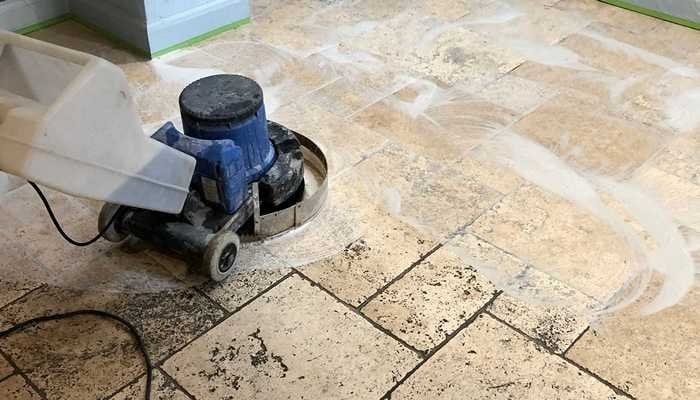
Travertine’s porous surface traps dirt deep within its structure. To remove it, we start with a targeted pre-treatment that loosens embedded grime. We then use industrial-grade rotary scrubbing machines equipped with soft brushes and pH-neutral solutions to gently agitate the surface without damaging the stone.
The resulting slurry—a mix of loosened dirt and cleaning fluid—is immediately extracted using a high-powered clean wet vacuum. Or if there is embedded soil that the brushes cannot reach, we use our pressurised water rinsing equipment to remove the deeply embedded soil from holes and the grout.
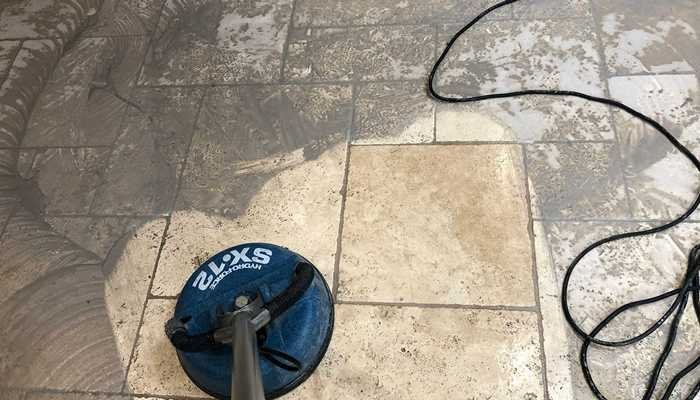
This ensures no residue is left behind and prepares the surface for polishing or sealing.
Pro Tip: If your travertine looks clean but feels sticky or dull shortly after mopping, it’s likely that embedded grime is still present. Professional extraction is the only way to remove it entirely.
Step 3: Polishing or Honing
Once clean, we refine the surface based on your preferred finish. Honing uses abrasive pads to create a smooth, matte texture—ideal for understated elegance and slip resistance. Polishing involves finer abrasives that restore a high-gloss, reflective finish, perfect for formal spaces or feature floors.
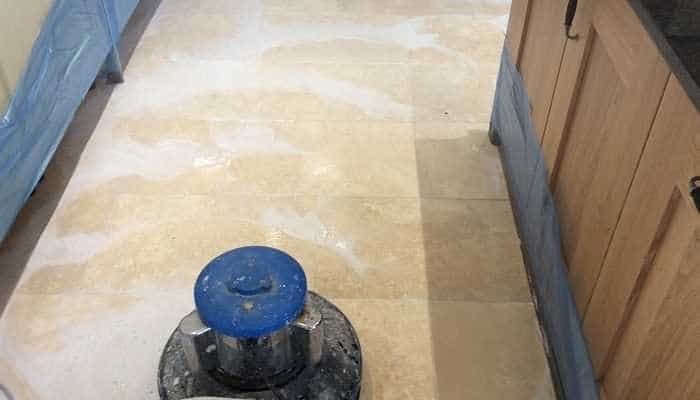
Both methods remove light scratches, restore clarity, and enhance the stone’s natural colour variations.
Step 4: Grout Renewal And Repair
Grout lines are often the dirtiest part of any stone floor. We use narrow, precision brushes and targeted cleaning agents to lift embedded grime and restore the grout’s original colour. This step is essential for achieving a uniform, refreshed appearance across the entire surface.
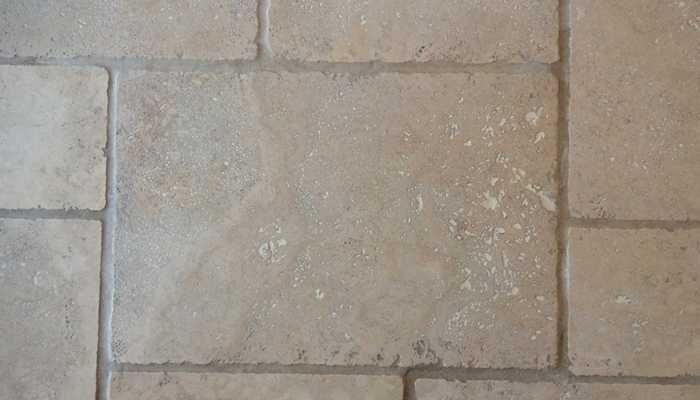
In some cases, we also repair or refill areas of missing grout, particularly in tumbled and filled travertine, where the original filler has loosened or dislodged over time. These exposed voids often appear as dark, unsightly holes that disrupt the floor’s uniformity. By restoring these areas with colour-matched materials, we improve both the durability and visual appeal of the surface.
Step 5: Sealing for Long-Term Protection
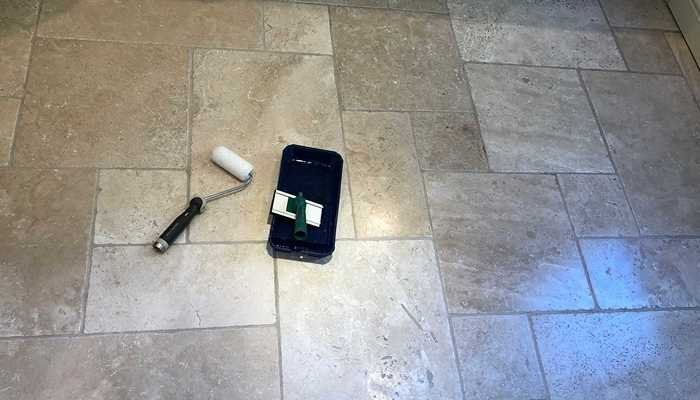
The final step is sealing—a critical part of preserving your investment. We apply a premium impregnating sealer that penetrates deep into the stone and grout, forming an invisible barrier against moisture, stains, and microbial growth.
Why Choose a Local Surrey Specialist?
When it comes to restoring travertine floors, experience matters—but local expertise matters more. While national franchises may offer generic solutions, a Surrey-based specialist brings something far more valuable: an understanding of the region’s unique conditions, materials, and expectations. Here’s why working with a local expert makes all the difference.
Local Knowledge Matters
Surrey’s climate and geology present specific challenges that can affect the performance and longevity of natural stone surfaces. From frost-prone patios in Godalming to hard water staining in Guildford bathrooms, we’ve seen how local environmental factors impact travertine over time.
We tailor our methods to suit these conditions. For outdoor installations, we use weather-resistant impregnating sealers that protect against freeze-thaw cycles and algae growth. For indoor floors exposed to hard water, we select pH-neutral cleaners that prevent mineral deposits and dulling. Even the type of soil tracked in from garden paths can influence our approach to stain removal and sealing.
Our familiarity with Surrey’s homes—from period properties with original stonework to modern builds with polished finishes—means we can anticipate potential issues before they arise and recommend solutions that work in the long term.
Pro Tip: If your travertine patio shows signs of green algae or frost damage, it’s likely due to inadequate sealing. A weather-resistant penetrating sealer tailored to UK conditions can dramatically improve durability and appearance.
Personalised Service
We don’t believe in one-size-fits-all solutions. Every client has different goals, preferences, and concerns—and we take the time to understand them. Whether you’re preparing your home for sale, restoring a family kitchen, or maintaining a commercial space, we tailor our service to meet your specific needs.
Our process begins with a detailed consultation, followed by clear communication at every stage. We explain our methods, outline realistic outcomes, and never pressure clients into unnecessary treatments. You’ll know exactly what to expect—and why each step matters.
We also respect your time and space. Our team works efficiently, tidily, and with minimal disruption. No rushed jobs, no generic shortcuts—just meticulous care and attention to detail.
Proven Track Record
We’ve earned the trust of homeowners, property managers, and commercial clients across Surrey by consistently delivering high-quality results. From restoring stained hallway floors in Epsom to polishing luxury bathroom tiles in Farnham, our portfolio reflects a wide range of successful projects.
Our reputation is built on transparency, reliability, and craftsmanship. Clients return to us not just because we clean stone—but because we protect it, educate them, and stand behind our work. Many of our referrals come from word-of-mouth, and we’re proud to be known locally for our honest advice and lasting results.
What Our Clients Say
“I was convinced my kitchen floor was beyond repair, but the team completely transformed it. It looks better than the day it was installed!” — Jane C., Dorking
“The service was professional from start to finish. They were meticulous, knowledgeable, and the work exceeded my expectations.” — Julie C., Reading
“Our hallway travertine had become dull and stained. We were amazed by the results. It’s now bright, beautiful, and easy to maintain.” — Mrs. L Taylor, Godalming
Our Credentials
- Certified by leading stone care organisations
- Trained in the latest restoration techniques
- Equipped with state-of-the-art machinery
- Fully insured for peace of mind
Maintenance and Aftercare Tips
Professional cleaning and restoration breathe new life into your travertine floors—but the results will only last if they’re correctly maintained. Travertine is a premium material, and like any investment, it requires ongoing care to preserve its beauty and performance. Here’s how to protect your floors on a day-to-day, week-to-week, and yyear-to-yearbbasis
Daily Care
Travertine may look solid, but its surface is vulnerable to abrasion from grit and debris. The most effective daily routine is simple but essential:
- Dry dust-mop or sweep with a soft microfiber pad to remove loose particles that can scratch the surface. Avoid vacuum cleaners with beater bars, which may cause etching or chipping.
- Avoid dragging furniture or heavy objects across the floor. Use felt pads under chair legs and furniture feet to prevent gouging or surface wear.
This daily attention helps prevent micro-scratches and keeps the stone looking fresh between deeper cleans.
Weekly Cleaning
Once a week, give your travertine a more thorough clean using products designed specifically for natural stone:
- Use a pH-neutral stone cleaner—never acidic or alkaline solutions. These are gentle on the stone and won’t degrade sealants or cause etching.
- Focus on grout lines with a soft-bristled brush. Grout is porous and prone to discolouration, especially in kitchens and bathrooms. Regular attention prevents buildup and keeps the floor looking uniformly clean.
Avoid steam mops and harsh scrubbers, which can damage both the stone and the grout.
Spill Response
Travertine’s porosity means spills can quickly become stains if not addressed promptly. The key is to act fast and avoid spreading the mess:
- Blot spills immediately using a soft, absorbent cloth. Press gently—don’t rub.
- Avoid wiping, as this can push liquids into the pores or grout lines, potentially enlarging the affected area.
For oily or coloured spills (like wine, coffee, or cooking oil), a poultice may be needed to draw out the stain. If in doubt, contact a professional before attempting DIY stain removal.
Long-Term Protection
Even the best sealers degrade over time, especially in high-traffic or moisture-prone areas. To maintain long-term protection:
- Re-seal every 12–18 months, depending on usage. Hallways, kitchens, and bathrooms may need more frequent attention than guest rooms or decorative zones.
- Schedule professional inspections annually to assess wear, identify early signs of damage, and refresh the finish if needed.
A quick water droplet test can help: place a few drops on the surface—if they absorb rather than bead, it’s time to reseal.
Pro Tip: For outdoor travertine in the UK, choose a weather-resistant penetrating sealer and reapply annually before winter. This helps prevent frost damage, algae growth, and moisture ingress.
Frequently Asked Questions
Q: Can I use bleach or vinegar on travertine? No. Acidic cleaners will etch the surface and cause permanent damage.
Q: How long does the cleaning process take? Most residential jobs are completed in one day. Larger or heavily damaged floors may require two visits.
Q: Will sealing change the appearance of my floor? Penetrating sealers are invisible. Enhancing sealers can deepen colour and add a slight sheen—your choice.
Q: Is the process safe for pets and children? Yes. We use non-toxic, low-odour products and ensure the floor is safe to walk on once dry.
Conclusion: Protecting Your Travertine for Years to Come
Travertine is more than just a flooring choice—it’s a statement of style and quality. But without proper care, its beauty can fade. By investing in professional cleaning and restoration, you’re not just improving appearance—you’re extending the life of your stone and protecting your property’s value.
Whether you’re dealing with stains, dullness, or damage, our Surrey-based team is here to help. We combine deep expertise with local knowledge to deliver lasting results.
Ready to Restore Your Travertine?
📞 Call us on 0800 695 0180
19 Willow Rd,
New Malden
KT3 3RS
(01372)-664-337
We work throughout the country, just some of our work counties:
Copyright © Abbey Floor Care. Natural Stone Floor Restoration in Surrey and South West London FAQ - Privacy Policy - Terms And Conditions
Abbey Floor Care is a participant in the Amazon Services LLC Associates Programme, an affiliate advertising programme designed to provide a means for websites to earn advertising fees by linking to Amazon.co.uk. As an Amazon Associate, we earn from qualifying purchases.